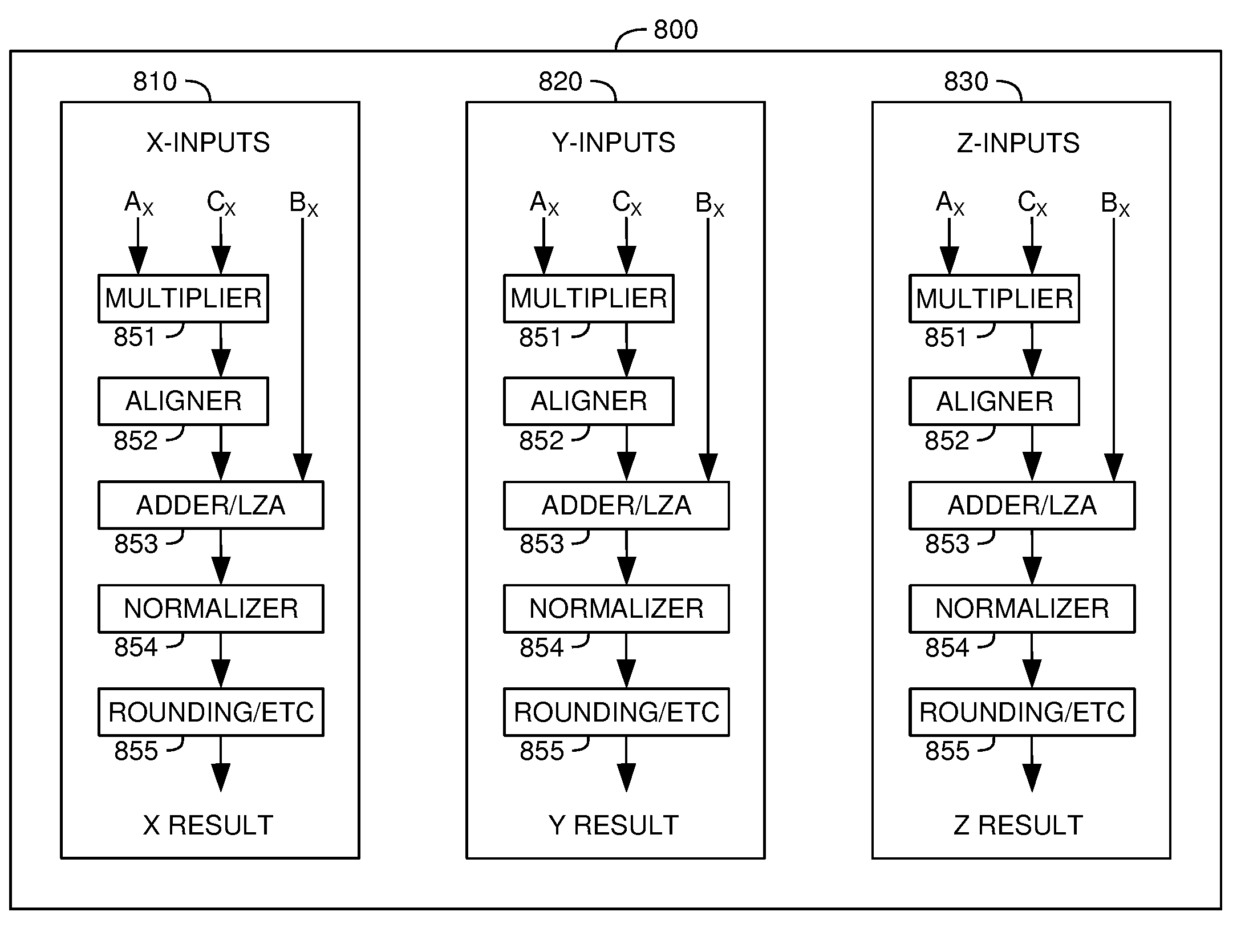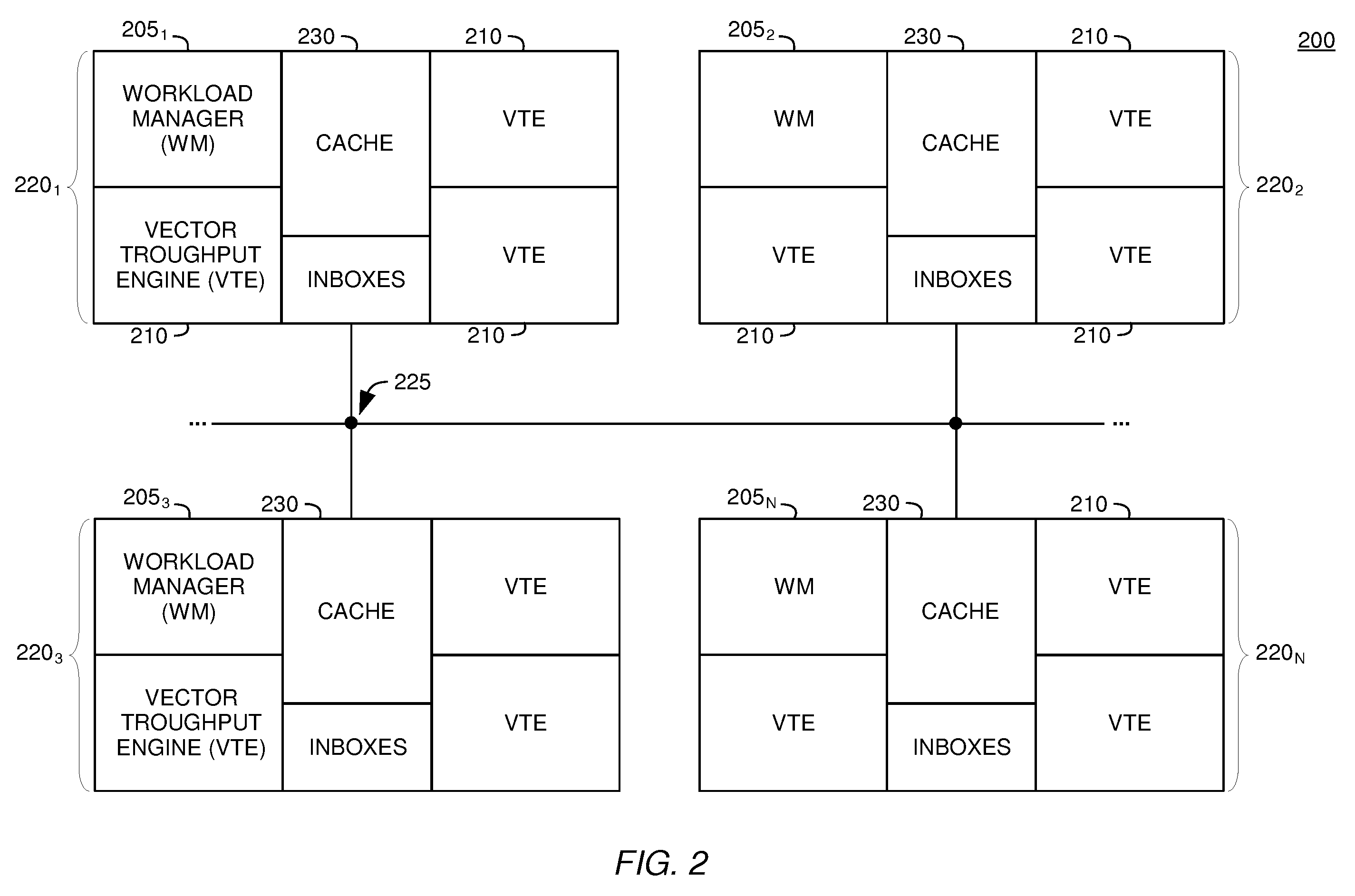Load Misaligned Vector with Permute and Mask Insert
- Summary
- Abstract
- Description
- Claims
- Application Information
AI Technical Summary
Benefits of technology
Problems solved by technology
Method used
Image
Examples
Embodiment Construction
[0042]The present invention is generally related to the field of image processing, and more specifically to methods and apparatus for handling data which may be related to image processing tasks. According to one embodiment of the invention, methods and apparatus are provided for aligning vector data as it is loaded from memory into a vector register file within a processor. Embodiments of the invention may align vector data which is misaligned in memory by passing the misaligned vector data through multiplexers which are in a load data path between memory and the vector register file. According to another embodiment of the invention, methods and apparatus are provided which misalign vector data as it is stored to memory. Embodiments of the invention may misalign vector data as it is stored to memory by passing aligned vector data through multiplexers which are in a store data path between the vector register file and memory.
[0043]In the following, reference is made to embodiments o...
PUM
 Login to View More
Login to View More Abstract
Description
Claims
Application Information
 Login to View More
Login to View More - R&D
- Intellectual Property
- Life Sciences
- Materials
- Tech Scout
- Unparalleled Data Quality
- Higher Quality Content
- 60% Fewer Hallucinations
Browse by: Latest US Patents, China's latest patents, Technical Efficacy Thesaurus, Application Domain, Technology Topic, Popular Technical Reports.
© 2025 PatSnap. All rights reserved.Legal|Privacy policy|Modern Slavery Act Transparency Statement|Sitemap|About US| Contact US: help@patsnap.com



